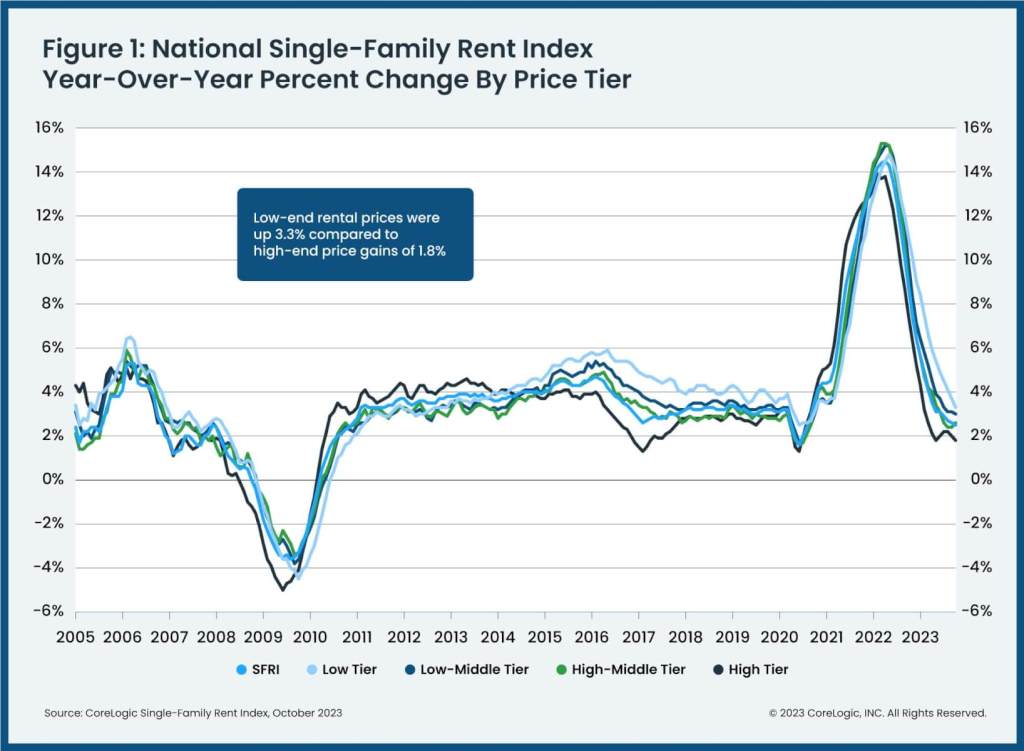U.S. single-family rent growth softened year-over-year in October, but remained above pre-pandemic levels.
Rental prices were up by 2.5% annually in October, cooling from 2.6% annual growth in September. It was the largest drop between September and October in more than a decade. Rent growth was also the lowest since the summer of 2020. That’s according to CoreLogic’s Single-Family Rent Index (SFRI), which analyzes single-family rent price changes nationally and across major metropolitan areas.
“While slowing rent growth is welcome news for tenants, affordability has suffered over the past few years, with median single-family rents increasing by about $500 nationally since February 2020,” Molly Boesel, principal economist for CoreLogic, said in a statement.
Cumulative increases across the country have registered almost 30% since February of 2020.

CoreLogic examined four tiers of rental prices: lower-priced (75% or less than the regional median); lower-middle priced (75% to 100% of the regional median); higher-middle priced (100% to 125% of the regional median) and higher-priced (125% or more than the regional median). The data firm also analyzed two property types: attached versus detached homes.
For these categories, rent-growth changes in October 2023 over October 2022 were:
- Lower-priced: Rent growth was down 3.3% versus 11%.
- Lower-middle priced: Rent growth was down 3% versus 9.8%.
- Higher-middle priced: Rent growth was down 2.6% versus 8.8%.
- Higher-priced: Rent growth was down 1.8% versus 7.4%.
Meanwhile, attached single-family rent prices grew by 3% year over year in October; detached rents grew by 2.1%.
San Diego posted the fastest year-over-year increase in single-family rents in October 2023 at 5.2%. Meanwhile, St. Louis posted the second-highest annual gain at 5%, followed by Boston and New York, both at 4.7%. Austin and Miami posted the biggest annual declines at -2.1% and -1%, respectively. Rent growth remained flat in Phoenix.







